DJI OM 4 vs DJI Osmo Mobile 3: how the phone gimbals compare
A magnetic mount and more make up the differences between these mobile gimbals
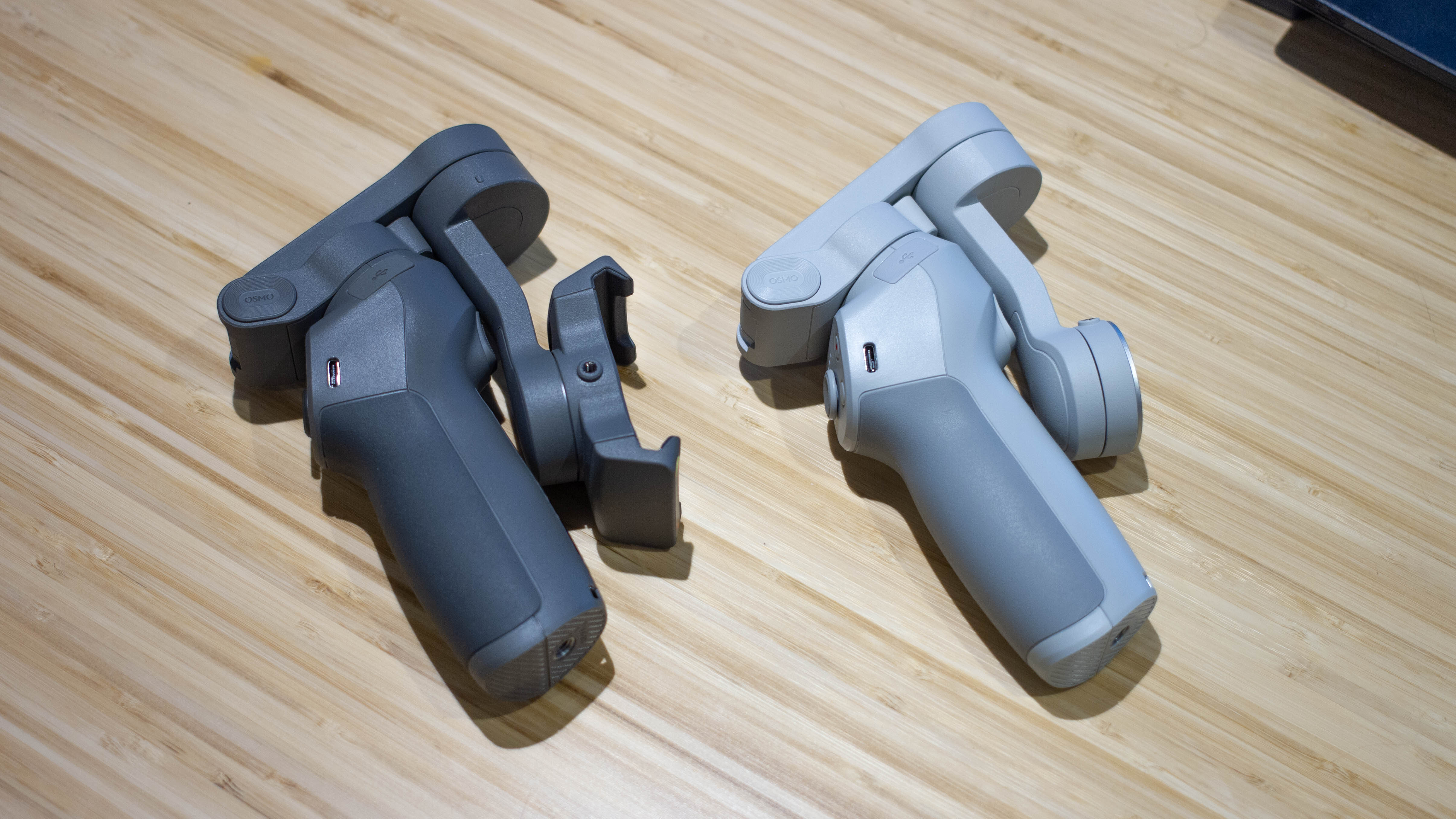
The DJI OM 4 – the shortened name for the Osmo Mobile 4 – adds magnets to our favorite smartphone gimbal series. Historically, the Osmo Mobile line has been all about one-upping the competition by adding extra convenience to the experience; and that’s a tradition going strong in 2020.
To look at the new OM4, you’d be forgiven for thinking that it was an Osmo Mobile 3 that’s spent a bit too long in the sun - the shape of the old and new gimbals are virtually identical, with the Osmo Mobile 4 sporting a lighter shade of grey. Look a little closer though, and you should spot one major design difference: that mount.
DJI has ditched the fixed grappling claw mount found on virtually every smartphone gimbal on the scene in favor of two new mounting options - a magnetic grip or an adhesive kickstand - more on those later. It’s also upgraded the motor and, uncharacteristically for DJI, upped the price (depending on how you look at things).
Is DJI's new gimbal for 2020 worth the extra cost? Should you upgrade or is this a perfect time to scoop up a last-gen DJI Osmo Mobile 3 if you’re in need of some smartphone stabilization? Let’s discuss the differences:
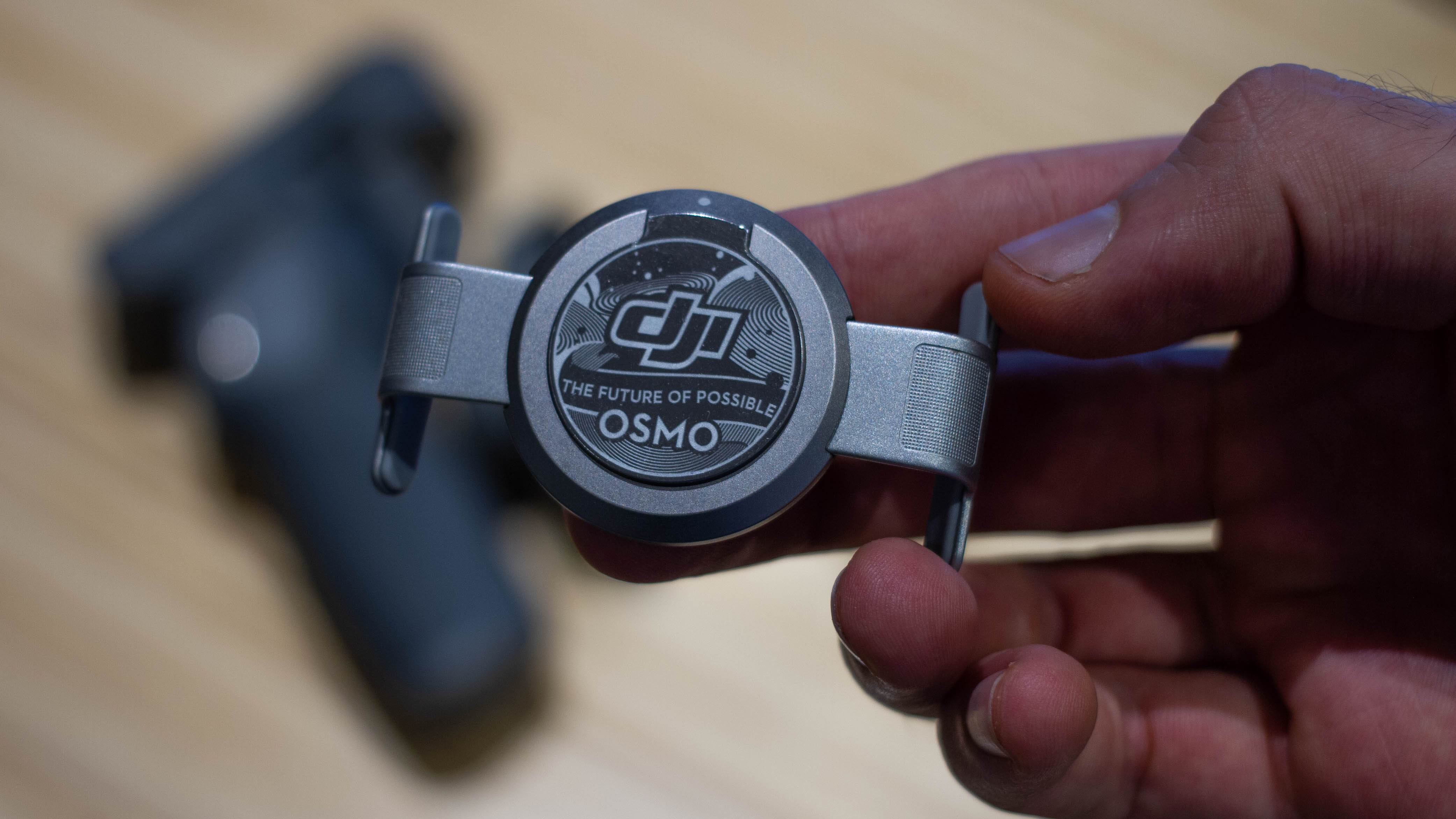
1. Mount
The Osmo Mobile 4 gives you two ways to mount your phone to its motorized arm - and the first is a magnetic grip. Slimline, solid and not much bumpier than the Samsung Galaxy Note 20 Ultra camera bump, it delivers the freedom to latch your phone to your gimbal in moments without constant clumsy fumbles.
The magnetic grip is spring-loaded, so works the same way the grip of the Osmo Mobile 3 does when it comes to securing your smartphone. That said, the grip ends are much slimmer than the OM 3, and around the back is a powerful magnet, which attracts to the gimbal itself for a lock-tight fit.
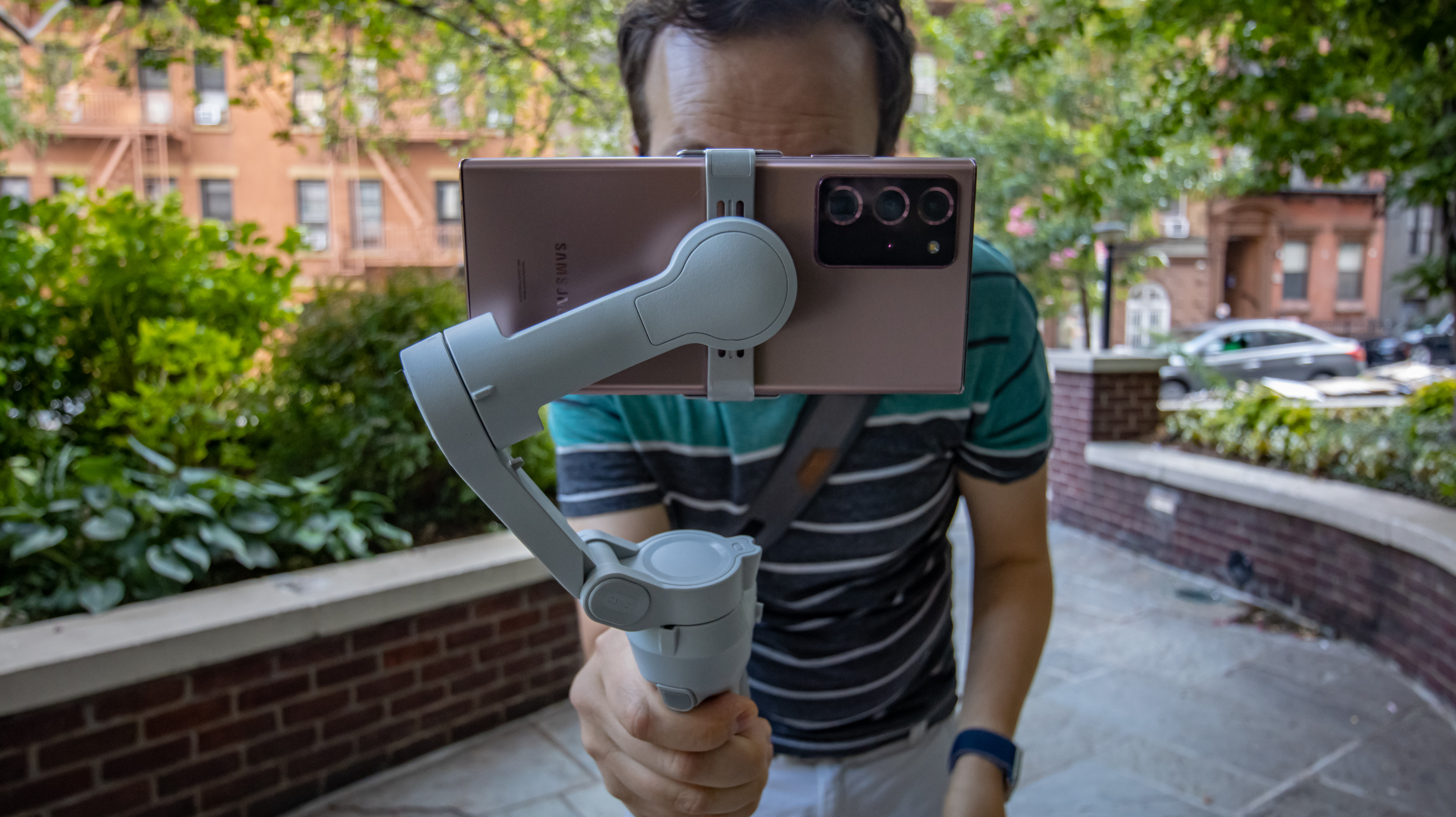
We tested the Osmo Mobile 3 and 4 with big phones sporting screens climbing up to 6.9-inches, and it handled them without any issues. At no point did we feel the magnet might detach in regular use – certain phone cases may case your handset to slip out of the grip before the magnet becomes attached. If we were skating with the gimbal or doing something more active that could see the phone getting clipped by an oncoming object, only then might we might have cause for concern with the Osmo Mobile 4, and choose the fixed-grip of the Osmo Mobile 3.
Get daily insight, inspiration and deals in your inbox
Sign up for breaking news, reviews, opinion, top tech deals, and more.
As for the second way, the new Osmo Mobile secures a smartphone in place – it’s with an adhesive magnetic clamp kick-stand. Sounds terrifyingly insecure, and DJI hears you. That’s why the instructions warn you not to use the Osmo Mobile 4 stick-on kick-stand magnet with glass-backed phones. That said, if your phone’s back is made of plastic or you're using a plastic case, and you’re happy with a multifunction finger loop/kickstand/gimbal grip around the back of it, the magnetic clamp is the most compact, convenient way we’ve ever seen to attach and detach a mobile to a gimbal. Bravo.
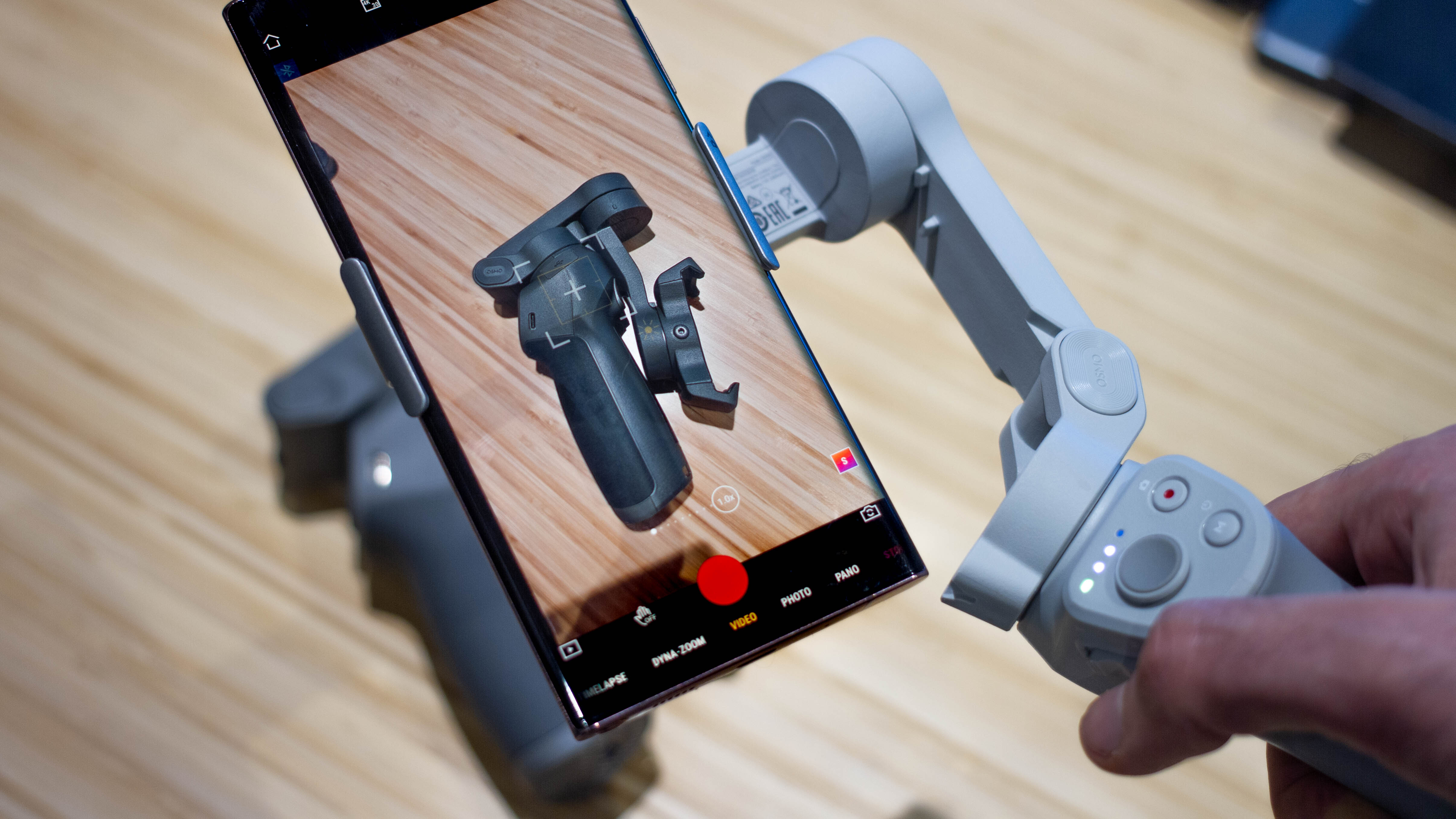
2. Upgraded motor
More than just skin deep, the Osmo Mobile 4 features a new, upgraded motor which supports larger phones, and spans an expanded range of motion by comparison to the Osmo Mobile 3.
Taking the phone about 10% further in the X and Y plane when controlling it with the joystick, the additional reach is welcome, and really helps out when the follow mod is active and locked onto a moving object covering a lot of distance.
The upgraded motor doesn’t just mean more reach, it also means less heat, especially when handling heavier phones in excess of 200g. While the Osmo Mobile 3 warmed up after 30 minutes of passive use, the Osmo Mobile 4 kept its cool.
If you’re wondering how the stabilization itself stacks up - this was virtually identical across the two devices - in other words, very good. There isn’t a better gimbal that can compete with the Osmo Mobile line when it comes to excellent stabilization coupled with a compact footprint.
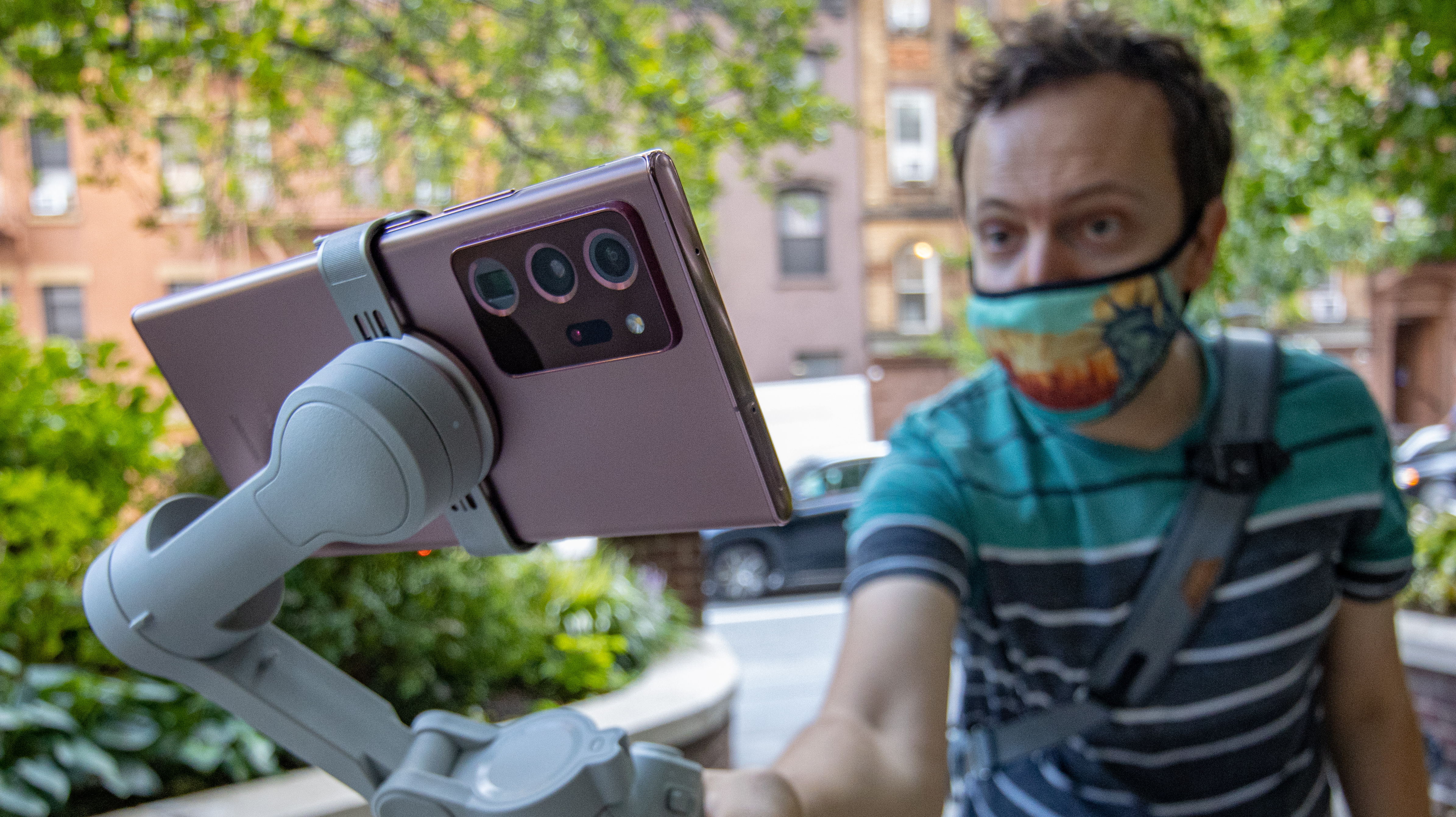
3. Dynamic Zoom
If you fancy yourself an Alfred Hitchcock of the modern age, then the Dynamic Zoom feature on the Osmo Mobile 4, available through the DJI MIMO companion app could help you live your best Vertigo life with a modern mobile twist.
Pan forward or backwards while locking onto a subject, and the camera combines digital zoom and smart stabilization to keep the focal point the same size, while warping the background. If you’re too young for Alfred Hitchcock, it’s the same Dolly Zoom effect that spelled trouble in Jaws. Nope, still nothing? Google it.
We achieved varying degrees of success with the feature handheld - more misses than hits. The footage just looked a bit too digital zoom crusty to be usable for anything more than a casual share - but when we put the Osmo Mobile on an actual dolly, it improved the effect a fair bit.
Dynamic Zoom is also entirely software-based, and the updated DJI MIMO app for iOS and Android was able to activate the effect on the Osmo Mobile 3 - so this is only a technical difference until Osmo Mobile 3 owners download the latest version of the DJI MIMO app.
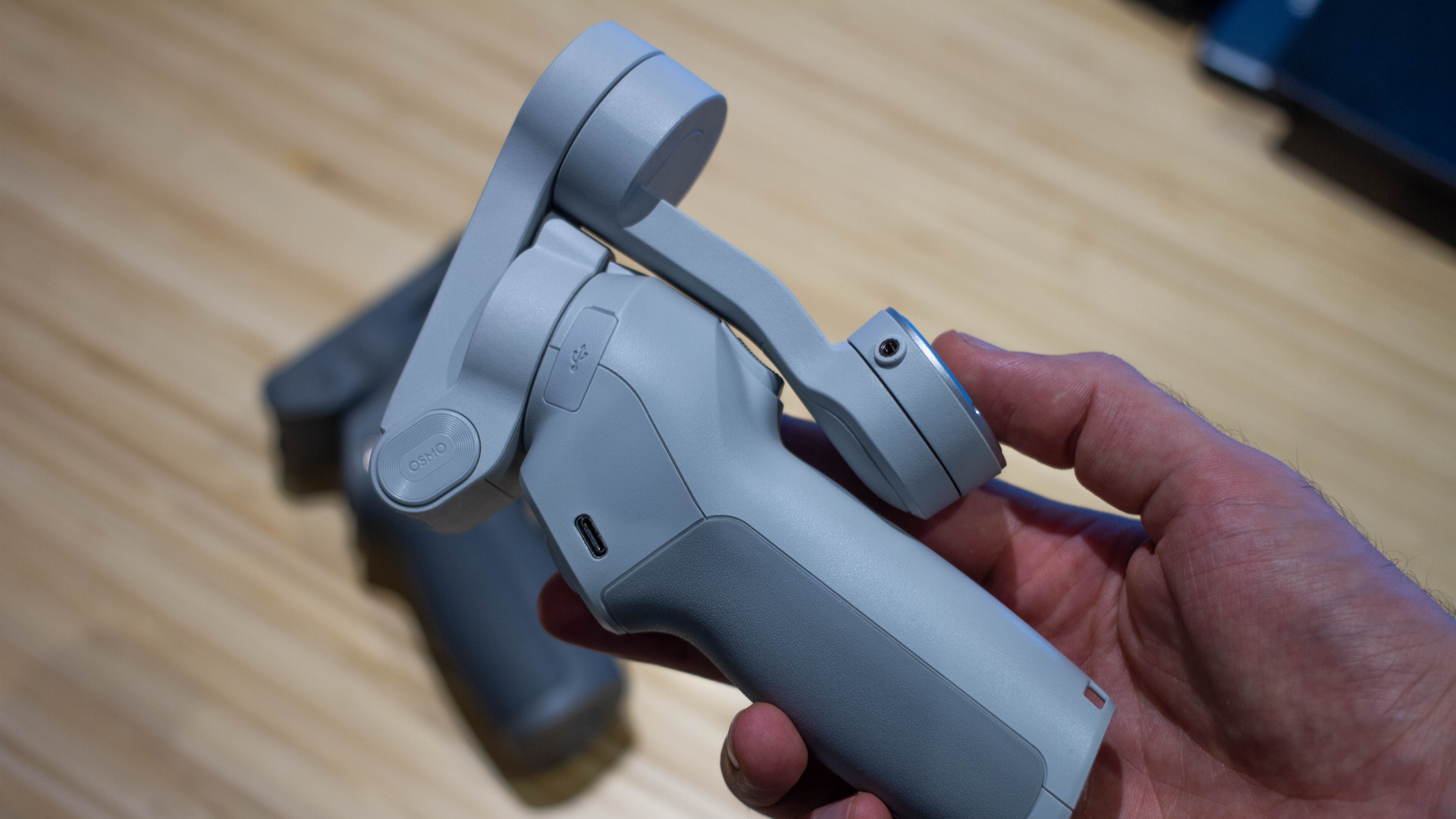
4. Color and design
There are a handful of very minor design differences between the Osmo Mobile 3 and 4. The first, and most striking is the color – last year's third edition is a dark two-tone grey, while this year’s Osmo Mobile 4 is an off-white/light grey number.
Both gimbals pack USB-C ports on the right, USB-A ports for charging a phone or accessory, function and record buttons as well as a joystick on the back, and a zoom slider to the left. The joystick of the Osmo Mobile 4 has a soft rubberized, textured finish, making it much grippier than the hard plastic joystick of old – but that really is the extent of the physical differences, aside from that magnetic mount, of course.
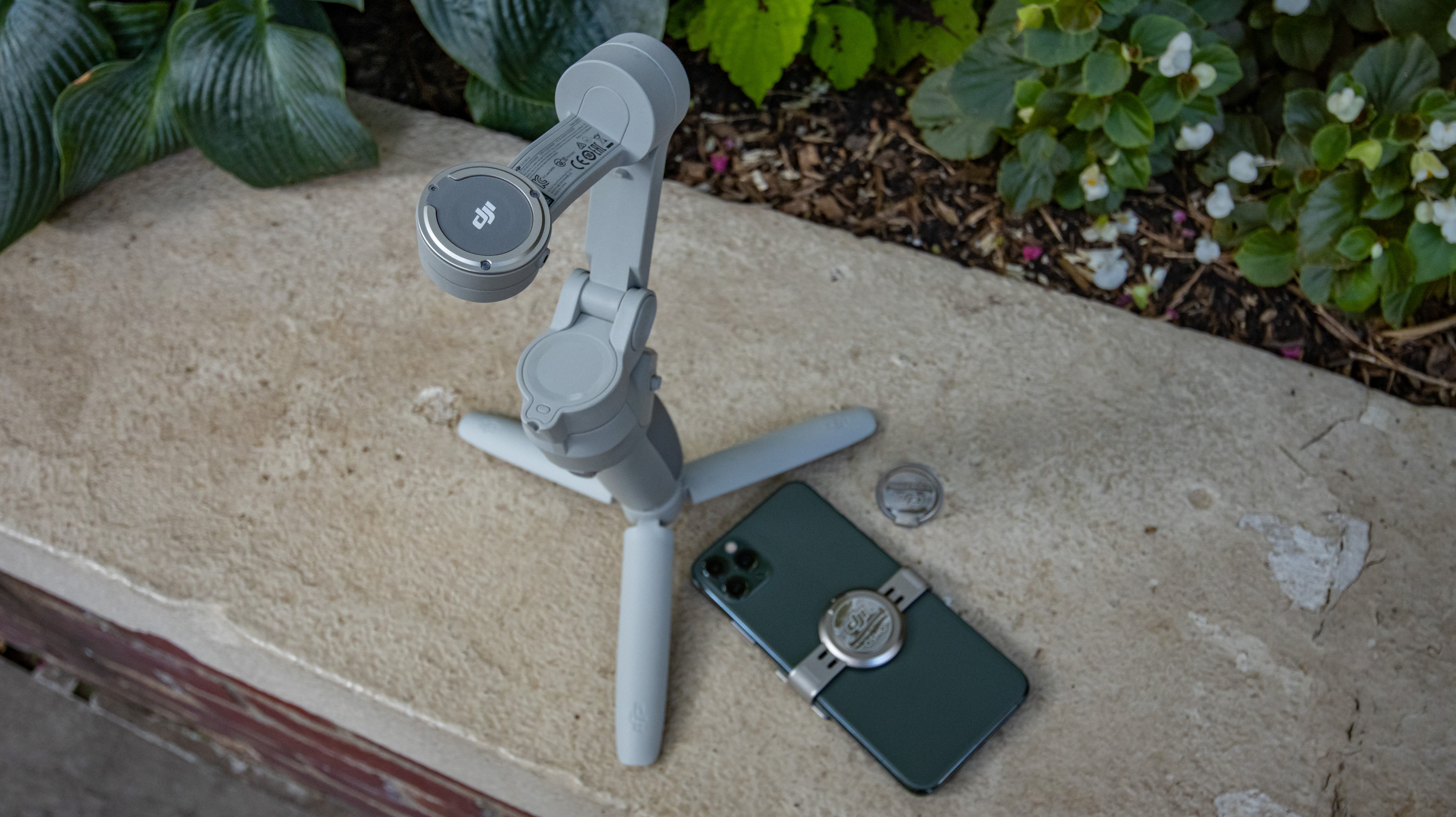
5. Price
DJI is breaking its trend of undercutting its own products with the Osmo Mobile 4.
The Osmo Mobile 3 started at $119 / £99 / $AU159 / AED 399 for the standard version, and If you wanted a few accessories bundled in, you could get it with the Osmo Grip Tripod and carrying base for $139 / £119 / $AU189 / AED 479.
If you fancy picking up the Osmo Mobile 4, however, the standard, accessory-free version isn’t an option. Instead, you’ll be paying $149 / £139 for the gimbal, a carrying bag, magnetic ring holder, magnetic smartphone clamp, a wrist strap and a tripod base.
As it happens, it’s the tripod base that gives the Osmo Mobile 4 a whole new lease of life. Coupled with the upgraded motors, it’s the perfect platform for chowing down on mobile movies and TV shows.
We had the massive Samsung Galaxy Note 20 Ultra in ours for hours - a perfect lockdown multimedia powerhouse, and unlike the Osmo Mobile 3 which got seriously hot, the Osmo Mobile 4 was a perfect smartphone stand when it wasn’t an all-action smartphone stabilizer.
Basil Kronfli is the Head of content at Make Honey and freelance technology journalist. He is an experienced writer and producer and is skilled in video production, and runs the technology YouTube channel TechEdit.
